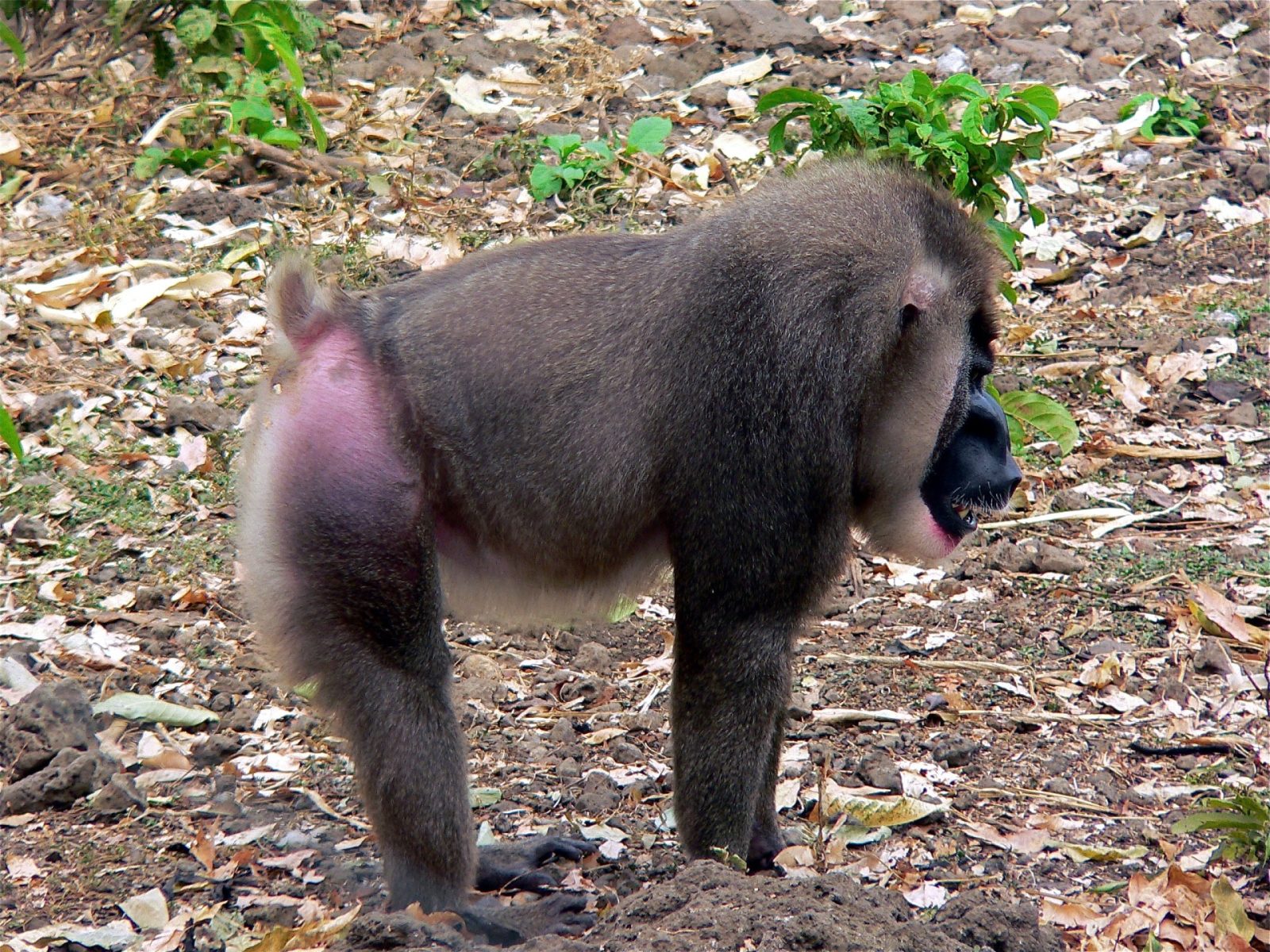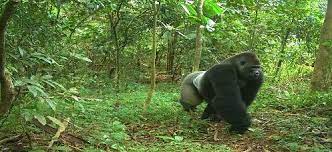The vast majority of hydrogen on earth is locked into water. While splitting water and then recombining it can be done, and is in some forms can be thought of...

Drill
The Drill is a species of primate, from the old world family and is found in Africa. It was previously thought to be a baboon, but is merely a close relation. Its closest relation is the Mandrill. It has a short tail, and has a body around 70cm long. It looks like a mandrill, but does not have the bright blue and red it its face that the Mandrill does. Males weigh up to 20kg, while females weigh up to 12.5kg
The body is a dark grey-brown; Mature males have a pink lower lip and white chin on a dark grey to black face with raised ridges on the nose, while the rump is pink, mauve and blue. Female drills lack the pink chin.
Two subspecies of drill have been proposed, though not fully accepted.
- Mainland drill, Mandrillus leucophaeus leucophaeus While the current range of this species is not fully known, it is all found between Southern Congo and Eastern Nigeria. the range is not continuous, with this population broken into at least 11 different areas, largely cut off from each other.
- Bioko drill, Mandrillus leucophaeus poensis While a population estimate is hard to assertain, 4500 drill carcasses have hit the bushmeat trade on the is land in just the last 13 years. The island has around 1 third 779 square miles officially protected (it appears that this is largely a paper park).
Below is a documentary on this species. Below that is our usual list of any articles written on the subject (if any). Below this, we will endevour to add links and contacts that will help in your travel to see these monkeys
Ecuadorians have voted to halt oil drilling in an Amazonian national park – GOOD NEWS!
- Tim
- September 13, 2023
The referendum on Yasuni reserve will benefit a huge range of species, along with several groups of uncontacted tribes of indigenous people. The vote was not close, with 90% of...
Graham Stuart (UK climate minister) claims that UK fracking and oil drilling is good for environment
- Tim
- October 19, 2022
Graham made this statement as he informed MPs that he had awarded more than 100 licences for north sea drilling - and claimed that this was a green policy. He...
Biden has officially suspended Trump era drilling leases
- Tim
- June 14, 2021
The Trump administration gave permission for drilling in the Alaska Arctic refuge. This is a ruling that should never have been made.
Thankfully, as the Biden administration is aware that...
Norway pension fund has disinvested from a British firm Jardines of destructive plans for the Tapanuli orangutan habitat
- Tim
- June 11, 2024

With an estimated historical habitat of this species 95% destroyed already, only leaving a small patch of rainforest with an estimated 800 Tapanuli orangutan, it would seem obvious...
What is Trumps views on climate change, anyway, and where is the USA currently on its emissions reduction
- Tim
- April 10, 2024

Apologies for those who think that this is covered too much on this website - I to would like to...
Donald Trump is on the ballot once again. What threat does he pose? Is he of interest to the rest of the world?
- Tim
- April 6, 2024

Some of us find politics fascinating, some do...
Environmental and political stories from the US in recent times
- Tim
- March 9, 2024
On this post, I will list a group of articles on North American politics and stories. It is unfortunately a fact, that, no matter what your position is on American...
The critically endangered Regent honeyeater may have new hope
- Tim
- February 22, 2024
This critically endangered species of honeyeater has a renewed hope of survival. They have become so rare, that the juveniles have started mimicking other bird species, because they hear the...
“You have adapted a bunker mentality” letter to Rishi Sunak
- Tim
- September 4, 2023
Now that the dust has settled, lets have a look at the whole Greenpeace debacle and what it is going to mean in the future in the UK.
This was...
The insanity of Rishi Sunak and his position – max out our oil and gas reserves
- Tim
- August 1, 2023
Despite all our promises, Rishi Sunak (the UK prime minister) has vowed to max out the UK fossil fuels reserves.

Now there are several stupid issues with this position.
- We...
News in brief – roundup of politics in the way of action, fossil fuel problems and positive moves
- Tim
- November 24, 2022
Huge extra emissions because of "cutting the green crap" The level of gas imports in the UK are around 13% higher than they would have been, had the Conservative government...
More change in direction with the new UK PM
- Tim
- September 24, 2022
Perhaps one of the issues with a parliamentary democracy is what happens when the leader of the party in power leaves.
The prime minister is the leader of the party...
Several years ago, I wrote about the Prime minister of the UK fighting against this ‘green C**P’ now they want us to look at them as the saviours of the energy crisis?
- Tim
- June 3, 2022
Back in 2013 David Cameron did a u-turn on government support for Wind and Solar power generation. This has greatly impacted the uptake of both - and the savings are...
UK police looking at changing their cars to tesla model threes – paramedic and fire cars may follow
- Tim
- January 21, 2022
A recent trial, by the police have suggested that a tesla model three may well be a better car for police work, despite many doubters suggesting that it would never...
A tiny reserve in Nigeria has been shown to be full of wildlife
- Tim
- November 5, 2021
Afi mountain wildlife Sanctuary is tiny, covering only 38.6 square miles, yet analysis has shown that this reserve has a whole host of wildlife.

Harvard has $42 billion in investments, but still not divesting from fossil fuels
- Tim
- November 1, 2021
With an endowment, to rival a host of small countries, the clout that Harvard should have in terms of divesting from fossil fuels could be vast.
Unfortunately they are dragging...
25 biggest European banks are failing on their own green pledges
- Tim
- September 7, 2021
Over the last decade or so, the laws of countries across the developed world have not kept up with changes in our knowledge of threats to the natural world. As...